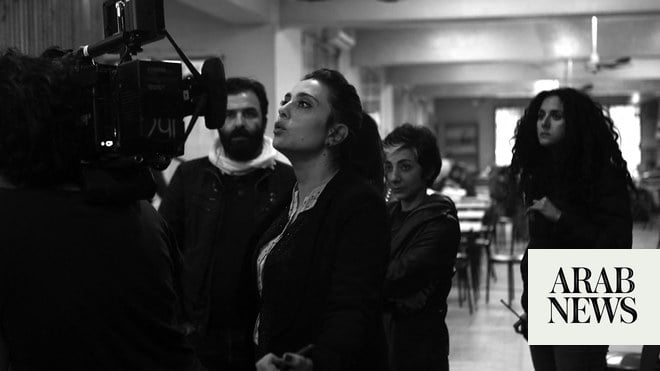
Raphael Cormack tells the tale of Egypt’s ‘explosion of creativity’ in the early 20th century
LONDON: It is 1917 in a city south of Cairo. An Egyptian actress has just left the stage after performing a play with her troupe. She returns to give a solo encore of her songs to a rapt audience. This woman was the exceptional Mounira Al-Mahdiyya. And she had to do all of this while dressed as a man.
For the latest updates, follow us on Instagram @arabnews.lifestyle
At the time, it was still not socially acceptable for women to perform on stage in Egypt. But Al-Mahdiyya was one of the trailblazers who would help to change that, and pave the way for the many talented Egyptian women who followed her.
“She starts off very early in the 20th century as a singer of old-school (music), but then makes her way through those musicals, ends up headlining her own shows and then going into theater. She puts on the first Arab opera and then records lighter popular songs in the 1920s. She also gets into film,” says Raphael Cormack, British scholar, editor and translator who tells the intriguing story of Al-Mahdiyya, aka Sultanat Al-Tarab, as well as other Egyptian female artists of the inter-war period — including vaudeville star and newspaper founder Rose Al-Youssef and Al-Mahdiyya’s rival, the legendary Umm Kulthum — in his recently released book “Midnight in Cairo: The Divas of Egypt’s Roaring ‘20s.”
Fatma Rushdi in the 1930s. (AFP)
Cormack first discovered this fascinating world as a PhD student living in Cairo, researching Egyptian theater.
“I was going through old theater performances and magazines and discovered that there was this whole other world,” he tells Arab News. It was, he admits, “sometimes not as respectable” as the ‘high culture’ focused on by Cairo’s theater critics and literary salons, “but it was a lot more fun, and also put women at the center of the story throughout the world.”
“I tried to (show this world) through the perspective of the female stars whose words and pictures I found in these magazines,” he says of his book.
Cormack relied on memoirs, journals, magazines and periodicals to chart the stories of the divas who made Emad al-Din Street the “center of nightlife” in Downtown Cairo’s Ezbekiyya district. His aim was to show how these performers contributed to “an explosion of creativity” which “too often is restricted to ‘more serious’ literary groups.”
Cormack first discovered this fascinating world as a PhD student living in Cairo, researching Egyptian theater. (Supplied)
Although eager to highlight the untold lives of these female artists, Cormack was equally keen not to reproduce nostalgic interpretations of this much-feted era. He also tried to steer the focus away from Alexandria as the center of cosmopolitanism, as it is often portrayed by orientalists. Rather, he wanted to tell the story of this buoyant arts scene through the perspective of people who lived in Cairo, spoke Arabic as a native language, and were interacting with people from all kinds of backgrounds.
While very aware of the problems and different power dynamics prevalent in this era, Cormack was still stunned by his discovery of a world were “people were interacting together with some degree of equality and at least without exclusion.”
“In this Arabic-speaking nightlife, there were people creating a different model of cosmopolitanism, one that doesn’t exclude in the way the ordinary story we get from Lawrence Durrell’s “Alexandria Quartet,” for example, excludes Egyptians,” he continued.
Beyond the inclusionary atmosphere of the era, Cormack was also intrigued by how these female artists formed their own theater troupes and toured with them inside Egypt and across the Middle East.
Cormack relied on memoirs, journals, magazines and periodicals to chart the stories of the divas who made Emad al-Din Street the “center of nightlife” in Downtown Cairo’s Ezbekiyya district. (Supplied)
“One example is Egyptian actress Fatma Rushdi whose theater group toured Palestine, Syria, Lebanon, Iraq and North Africa,” he says. “She took all these texts which were either newly written plays, or adaptations of classical Arabic stories or of European plays, and performed them in the Middle East and in many cities across Egypt.”
Like Al-Mahdiyya, a singer, dancer and actor all at once, these stars were genre-defying — their work an invitation to “reconsider what genre means” when thinking about 1920s Cairo, he says.
What Cormack achieves with his book is much more than just a vivid representation of a group of female artists who were creative, revolutionary and forward-looking. He questions how we think of, classify, and archive art.
“When I was writing the book, I wanted it to speak to people in Egypt, people who knew something about these histories. I hoped they would get how much similarity there is between this period and what’s happening now. I think what’s going on in this book is women facing up to so many things that they have to deal with now globally and in Egypt. That there were possibilities in this period is what makes it an exciting one to look at,” he says.
“But I also wanted to be able to speak to people in Anglophone countries who probably didn’t know that Cairo had any kind of entertainment scene in the 1920s. As I say somewhere in the book, I wanted to show that the Middle East is not just a place of politics and war, that it’s not just a problem to be solved.”












